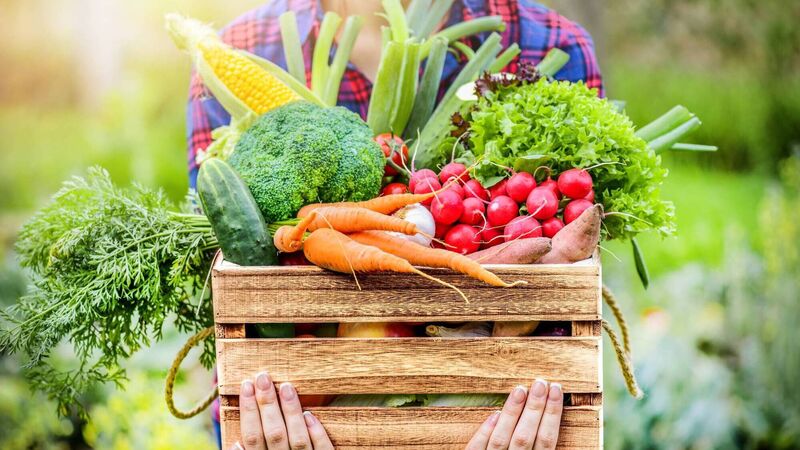Eimear Hutchinson: A garden bursting with produce - here's what to do...

Farmer woman holding wooden box full of fresh raw vegetables. Basket with vegetable (cabbage, carrots, cucumbers, radish, corn, garlic and peppers) in the hands.
I WAS genuinely considering writing about rainy day activities to do with children but, forever the optimist, I hope that by the time this article goes to print, the sun will be splitting the rocks, making that topic redundant.
So, instead, I will draw on more positive thoughts and write about the abundance of vegetables growing in the garden, and some of the recipes and techniques we are using to make sure nothing goes to waste.
I have come to discover this year that I don’t really have the aptitude for flowers. I try my best but my perpetually haphazard approach to most situations doesn’t really work with them. I could blame the rain or the four weeks away from the garden, but the truth of the matter is that I have a lot more to learn.
Up until this year, I operated with the following approach – see something in the garden centre, buy it, plant it, and then hope for the best. That approach is pretty hit and miss, I can assure you.
This year, however, all the learning is beginning to come together so I have a specific list of plants I want for beds for next year so that I am prepared in time and I have colour for as long as possible.
My vegetables are doing far better than my flowers, which is immensely satisfying especially as the freezer is now starting to fill up with home grown goodness to take us through the winter. We added a polytunnel to the garden this year and I have had a much more fruitful year as the germination rates of my seeds started in pots indoors was much higher than those sown directly into the ground in previous years. I also planted them out when they were larger plants so the seedlings weren’t decimated by slugs, caterpillars and birds, like they were in previous years.
When you grow an abundance of your own vegetables, the challenge always is to make sure you don’t get bored of the same ones. I have tried a wider variety in previous years, but in more recent times I stick to what I know we will eat and just grow lots of it.
Three weeks later, I am still playing catch up. We arrived back to courgettes heavier than my newborns (and they weren’t small!), a lot of tomatoes, and mountains of green beans, mangetout and peas.
It is a great time to try some new recipes with vegetables that are in season (a good rainy day activity with children, dare I say!), even if you buy them in the shops it is a great habit to get into buying seasonal, local produce because it doesn’t get fresher than that.
My children don’t necessarily adore courgettes, the texture they sometimes find a little off putting, so I have had to get inventive about how I use it. A useful tip when cooking with courgettes is to search for recipes using the terms zucchini or marrow; zucchini is what Americans call courgettes and a marrow is a courgette that has been left on the plant too long and is huge. The biggest hit so far has been a courgette and almond soup, a somewhat bizarre combination, but believe me it works.
Courgette is a versatile vegetable because it doesn’t taste that strongly so it can be used in sweet dishes also. We have courgette, lime and ginger jam on the list of things to make this week, as well as marrow chutney, which I think will make a lovely Christmas gift later on this year. We are also going to make a cake using courgette – the texture adds a lovely moistness to sweet cakes without introducing a savoury flavour - and I’m also going to make courgette bread to go with the soup.
There is a long list of vegetables and fruits you can blanch, then freeze, I do it to peas and mangetout from the garden but it works well for broccoli, cauliflower and carrots. The green beans I just throw into the freezer once they are washed and topped and tailed.
Tomatoes, I roast with garlic, basil and onion and then blitz up to make a nice sauce for bolognese, or you could eat it as a soup. Pop it in a ziplock bag and lie it down flat in the freezer so it doesn’t take up much space and it is also quicker to defrost that way.







 App?
App?


